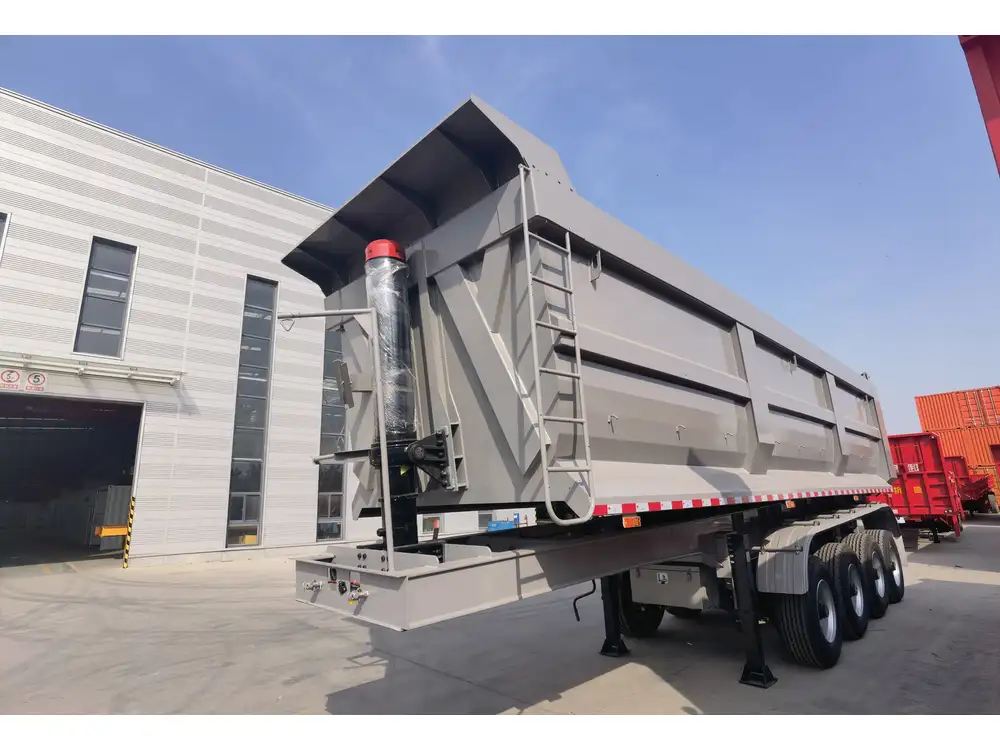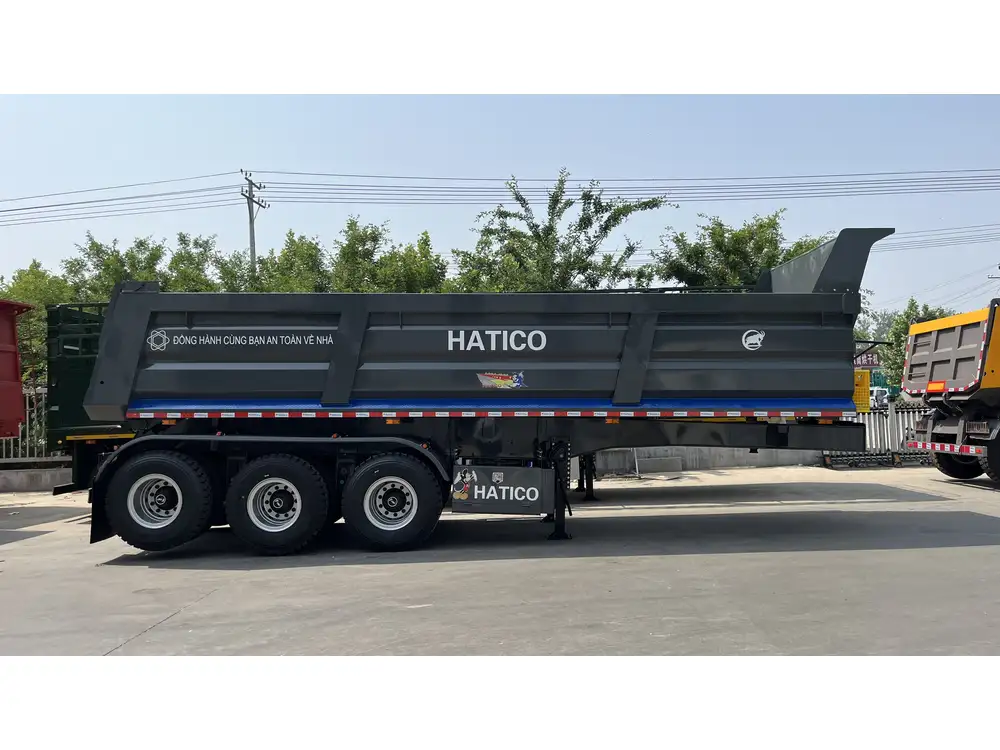Introduction to Pneumatic Tank Trailers
Pneumatic tank trailers, an essential component of the bulk transport industry, specialize in the movement of powdered or bulk materials. They are designed to transport products such as cement, flour, sugar, and other granular substances, utilizing compressed air for unloading. Understanding the intricacies of pneumatic tank trailers is critical for logistics companies, manufacturers, and suppliers alike, as these vehicles directly influence operational efficiency and product integrity.
Key Components of a Pneumatic Tank Trailer
Pneumatic tank trailers exhibit unique structural and operational features that set them apart from conventional tankers. Below is an in-depth exploration of their key components:
| Component | Description |
|---|---|
| Tank Body | A cylindrical container usually made of aluminum or carbon steel, designed to withstand high pressure. |
| Pneumatic Lines | These lines facilitate the flow of compressed air into and out of the tank, enabling efficient material transfer. |
| Discharge Manifold | A system of valves and pipes that controls the flow of material during the unloading process. |
| Vents | Allow for equalization of pressure inside the tank during loading and unloading. |
| Suspension System | Provides stability and support for heavy loads, improving maneuverability on the road. |
| Kingpin | The connection point that attaches the trailer to the tractor unit, ensuring secure transport. |
| Wheels and Axles | Critical for safe navigation, designed to handle heavy loads while maintaining road safety standards. |

Detailed Analysis of the Key Components
Tank Body
The tank body of a pneumatic tanker is designed to handle high pressures during the transportation and unloading of bulk materials. The cylindrical shape is not merely aesthetic; it is fundamental in ensuring uniform distribution of stress across the body of the tank. The welding quality and the thickness of the material directly impact the durability and safety of the trailer.
Pneumatic Lines
These lines are the arteries of a pneumatic tank trailer, delivering compressed air which is vital for the efficient unloading process. Standard sizes vary, but they usually cater to high flow rates necessary for rapid unloading. Proper maintenance of these lines is crucial, as any leaks can lead to severe operational inefficiencies.
Discharge Manifold
This component encompasses various valves and fittings, allowing operators to control the unloading process with precision. Consistent inspection and timely maintenance of the discharge manifold are essential to ensure the smooth flow of materials, preventing any blockages or material wastage.
Vents
Vent systems play a pivotal role in maintaining the pressure balance inside the tank. By releasing air pressure during both loading and unloading, vents help prevent structural damage to the tank while facilitating swift material transfer.
Suspension System
Given the heavy bulk loads, an effective suspension system on the pneumatic tank trailer ensures stability, especially while navigating uneven terrain or during abrupt stops. A well-designed suspension system not only enhances safety but also improves the longevity of both the trailer and the tractor.
Kingpin and Couplings
These components are critical for maintaining a secure connection between the trailer and the truck. Their robust construction must withstand high stress during transport. Regular checks ensure a safe and reliable trucking operation.
Wheels and Axles
Fundamentally, the wheels and axles are engineered to carry heavy loads while minimizing damage to the tires and enhancing fuel efficiency. The choice of wheels—whether steel or aluminum—can significantly affect performance. Ensuring proper alignment and maintenance can prevent costly breakdowns.
Types of Materials Transported by Pneumatic Tank Trailers
Pneumatic tank trailers are versatile vehicles that can transport various types of dry bulk materials. Here’s a closer look at some common materials:
- Cement: Most commonly transported in pneumatic trailers, it is crucial for construction, requiring high efficiency and fast unloading capabilities.
- Powdered Chemicals: Including various industrial powders, which demand high hygiene and safety standards due to potential hazards.
- Food Products: Such as flour and sugar, where contamination is a concern and thus requires specialized tank liners.
- Plastic Resins: Used in manufacturing processes, necessitating efficient transportation while maintaining product quality.
Advantages of Using Pneumatic Tank Trailers
Pneumatic tank trailers offer numerous advantages that enhance their operational efficacy:
- Efficiency of Unloading: They enable rapid unloading, reducing downtime at delivery sites and increasing logistical speed.
- Minimized Contamination Risks: The closed system of pneumatic tank trailers greatly reduces the possibility of contamination, which is critical for transporting food-grade materials.
- Versatile Applications: They can be utilized in various industries, from food to construction, showcasing flexibility in usage.
- Cost-Effective: Long-term operational savings can be realized due to lower maintenance costs and minimized material wastage.

Disadvantages of Pneumatic Tank Trailers
Despite their numerous advantages, pneumatic tank trailers have several drawbacks:
- Higher Initial Costs: The initial investment for purchasing pneumatic tank trailers can be substantial compared to other types of trailers.
- Maintenance Requirements: They require regular upkeep and specialized training for operators, adding to operational costs.
- Limited Payload: Depending on the design, they may have lower payload capacities than conventional tank trailers, impacting efficiency in certain applications.
Operational Considerations for Pneumatic Tank Trailers
When considering the use of pneumatic tank trailers, various operational aspects must be evaluated:
| Consideration | Importance |
|---|---|
| Loading and Unloading Systems | Evaluating the efficiency of the loading and unloading systems is vital to ensure rapid turnaround times. |
| Driver Training | Operators should be adequately trained in the unique handling and operation of pneumatic systems. |
| Material Specifications | Understanding the properties of transported materials is vital to ensure compatibility and safety during transport. |
| Regulatory Compliance | Ensuring adherence to local and national transport regulations, reducing legal liabilities. |
| Maintenance Schedules | Implementing proactive maintenance routines to assure reliability and longevity of the equipment. |
Safety Features in Pneumatic Tank Trailers
Safety is paramount in the transportation of bulk materials. Pneumatic tank trailers are equipped with various safety features designed to mitigate risks:
- Emergency Valves: Automatically release pressure in case of malfunction to prevent explosions or accidents.
- Load sensors: Monitor equipment integrity and prevent overload situations that could threaten the vehicle’s stability.
- Safety Chains and Tie-Downs: To secure materials during transport, ensuring compliance with safety regulations.

The Role of Technology in Pneumatic Tank Trailers
Modern pneumatic tank trailers increasingly incorporate advanced technologies to streamline operations:
- Telematics Systems: Providing real-time data on trailer performance, location tracking, and condition monitoring to optimize fleet management.
- Automated Unloading Systems: Facilitating efficient unloading operations while minimizing manual labor and the risk of injury.
- Smart Materials Management Systems: Allowing operators to monitor and manage inventory levels efficiently, ensuring a stable supply chain.
Conclusion: Future of Pneumatic Tank Trailers
Pneumatic tank trailers continue to evolve, reflecting trends toward efficiency, safety, and environmental consciousness. With increasing demand for bulk transport, innovations in design and technology will lead the way forward, ensuring that pneumatic tank trailers remain a critical asset in logistics and transportation.
In summary, understanding what pneumatic tank trailers are, their unique components, and their operational advantages and challenges can significantly benefit stakeholders in logistics, manufacturing, and supply chain management. As industries continue to adapt to changing market demands, so will the design and functionality of pneumatic tank trailers, making them indispensable in the transport of bulk materials.



